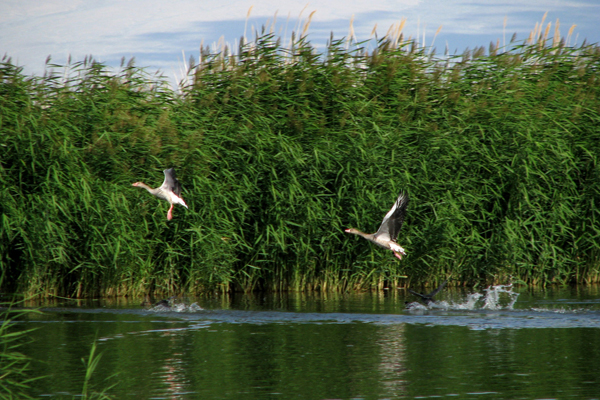

The main lakes are Khar Us Lake, Khar Lake and Dorgon Lake. The national park was established in 1997, and then designated as a Ramsar (wetland of international significance) site in 1999. The lakes have the largest reed beds in Central Asia. Surrounded by desert landscapes, it is surprising to find that rare wild boars can survive in the reeds. Saiga antelope, though rare, still make their way through the eastern areas of the national park and nearby Jargalant Khairkhan Mountain has snow leopards, argali sheep and siberian ibex. The mammals are, however, difficult to observe. For this reason, the many species of birds, the landscape and encounters with local nomads are the main attractions here.
On Jargalant Khairkhan Mountain you have a reasonably good chance of seeing wallcreeper, white-throated bush-chat, Eurasian and cinereous vulture, lammergeier, chukar, Altai snowcock, golden eagle and steppe eagle.
The water run-off from the mountain creates unusual habitats with birch groves on an otherwise arid desert steppe. Further east you will find Dorgon Lake, which is a salt and alkaline lake, having no outlets. As such, it does not support mosquitoes (as do the other lakes in July and August). Mongolia’s biggest sand dunes – Mongol Sands – end abruptly on the eastern shore of the lake, creating a Mongolian Riviera of sand beaches.
Recommended


Mongolian winter is the most incredible winter that one might experience and there is plenty to see and enjoy during a winter travel. Glittering white snow, clear fresh air, sun, and little chills are the image of Mongolian winter. Taking this fan...
Duration: 3 Days / 2 Nights
Destination: Gobi - Central


All of Mongolians celebrate the Lunar New Year, which is called in Mongolia “Tsagaan Sar” or the “White Moon”. It is widely celebrated throughout the country around January or February according to the combination of Solar-...





